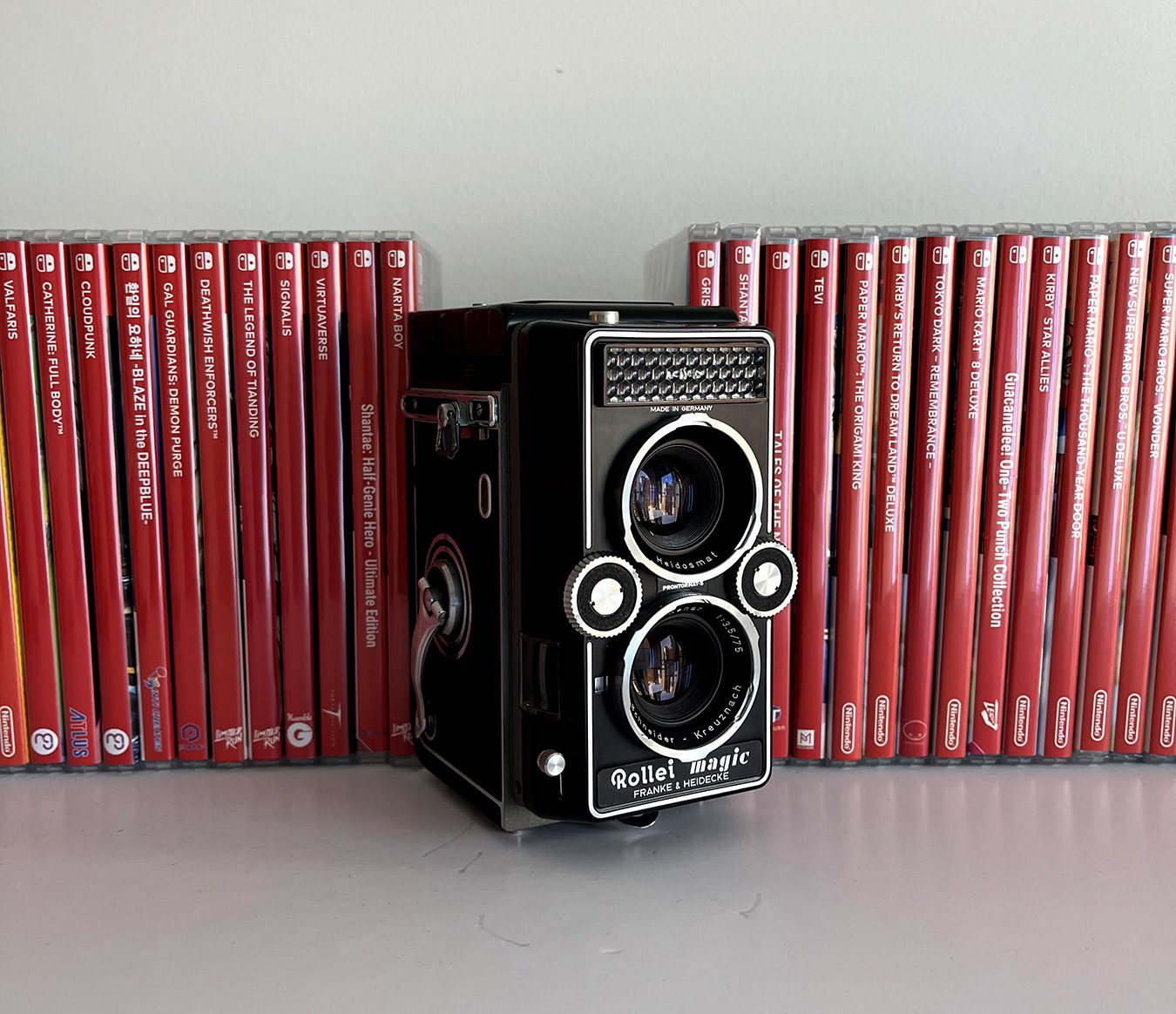I sometimes get students who bring rolls of colour film to black and white film developing sessions so I thought I’d do a quick experiment with developing a couple of types of colour film in some black and white developer.
Colour films have light sensitive silver halides in the emulsion that help get the colours right in the colour negatives or slides we are familiar with. During normal C-41 and E-6 processing, the silver halides are removed, leaving just the colour dyes. I wanted to try developing using the black and white process from start to finish to see what would happen. There are quite a few people online who have written about this but I wanted to try for myself to see what I could get. This is just a quick test, and more variations of exposure/film/development time and temp. could be tried to refine the results.
When developing colour film in black and white, the colour dyes remain in the film, making a very dense base. There are also other layers in colour film left behind that may be contributing to the density. The exception to this was the Harman Phoenix film. It has a bright yellow base out of the box, and after development, is quite clear. I also exposed and developed two rolls of black and white film for comparison.
Of course you might ask ‘why bother when there are so many good black and white films out there?’ Partly I wanted to see what would happen since I know there is silver halide in colour film, and I wanted to have an answer for students who come in and ask. It’s also a good thing to know if you have colour film lying around that you feel like playing with but don’t want to pay to have it developed at the lab. Also, why not?! You never know what you might find that you like the look of. I believe that in photography, if you ask the question ‘can I do x’ or ‘will this work if I do that’, you should try it and find out, as long as it doesn’t present any dangers of course. Do some research first so you understand what’s happening with the process to avoid wasting time. You wouldn’t, for example, want to try fixing film before developing. If you understand what’s happening, you would know the fixer will take out all of the silver and it won’t work. Take good notes when you try these things in case you find something you really like and want to repeat it. We don’t always remember the process details as well as we’d like to.
I found that my results were nice at times, some films look much better than others, and there is quite a range of base density. Some were not great, but there was an image in them all. I think the judgment about quality will depend on what you want from your images. If you like the rough grainy look, this might be for you. I thought the Ilford XP2 had a very nice look to it, not too grainy, and I was able to get some good contrast with the quick scan. The density in the Phoenix was much better with a 3-4 stop overexposure and the clear base was easier to scan. You could probably print these two in the darkroom. I think those two were my favourites. The Kodak Gold has some nice results as well but would be very difficult to print in the darkroom, so best left for scanning.
Let me know if you’ve ever tried to develop colour film in black and white, and what your results were. If you have any tips for others who want to give it a try, pass those along too!
The Technical Details…
Film stock:
Ilford FP4 Plus
Kentmere Pan 400
Ilford XP2 Super
Harman Phoenix
Kodak Gold 200
Kodak Elite Chrome 400
Chemicals:
Flic Film Black, White & Green developer
Ilford Ilfostop
Ilford Rapid Fix
The Process:
Film was exposed at box speed. Any multiple frames are exposure +1, and +2 (and +3 in some cases) for the second and third frames.
The exception is the Harman Phoenix which was pulled 2 stops, then subsequent frames are +1, +2, +3. The first test of Phoenix gave promising results but very thin so this is the second try.
The Flic Black White & Green was diluted at 1:50 and all film was developed at 20C.
The Ilford FP4 and Kodak Gold 200 were developed for 14 minutes with agitation once every minute after the first minute. This is a little long for FP4, but the roll was a bit old so I thought I’d give extra time.
The Kentmere Pan 400, Harman Phoenix, Ilford XP2 and Kodak Elite Chrome 400 were developed for 16.5 minutes.
Scanning was on an Epsom V800 Photo flatbed scanner. Limited adjustments were made to the file after scanning, mainly convert to a positive, convert to monochrome using the channel mixer, and basic levels adjustments. Better scans and results could be achieved with a dedicated film scanner and more time spent with each scan and file.






























